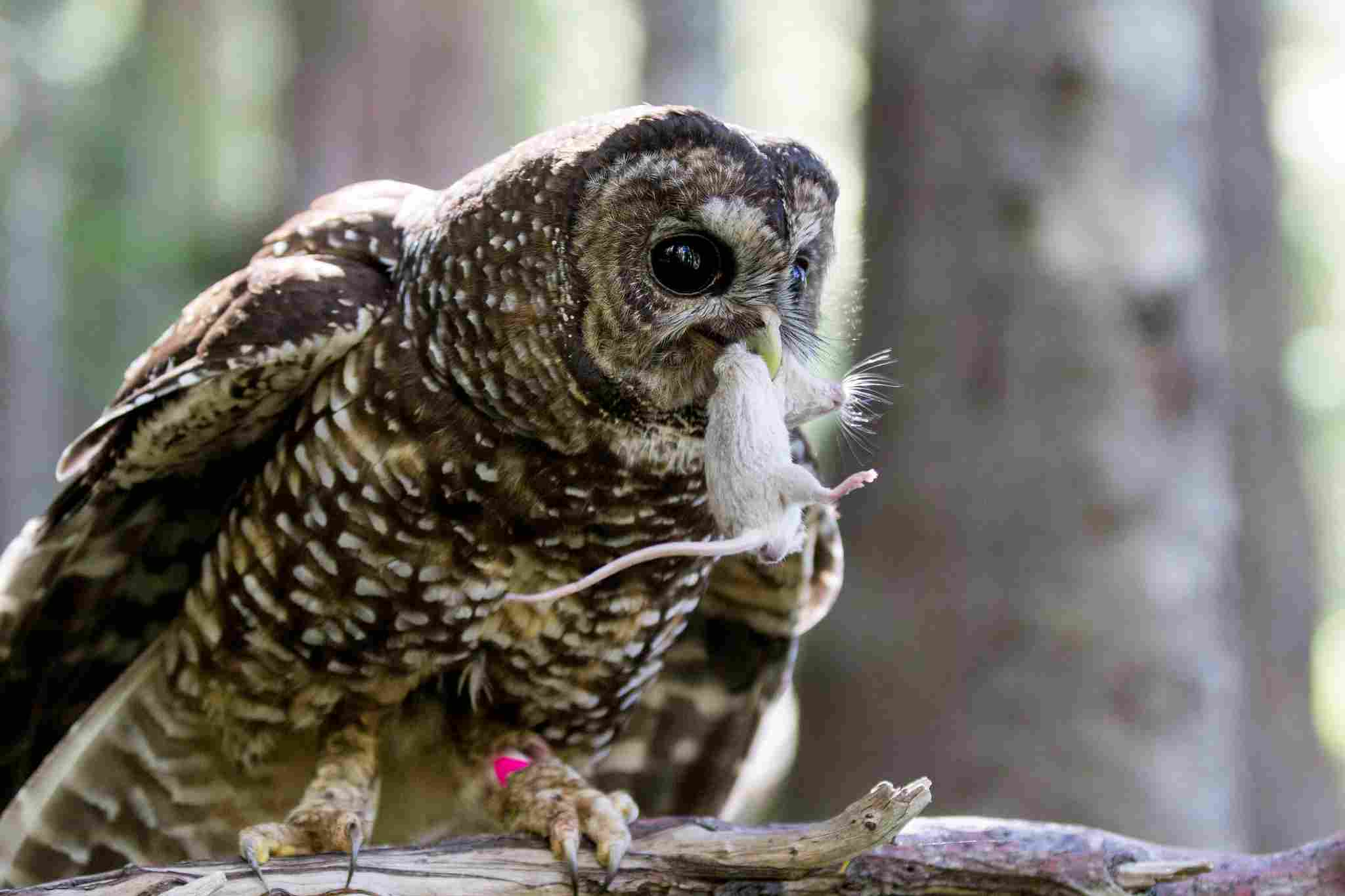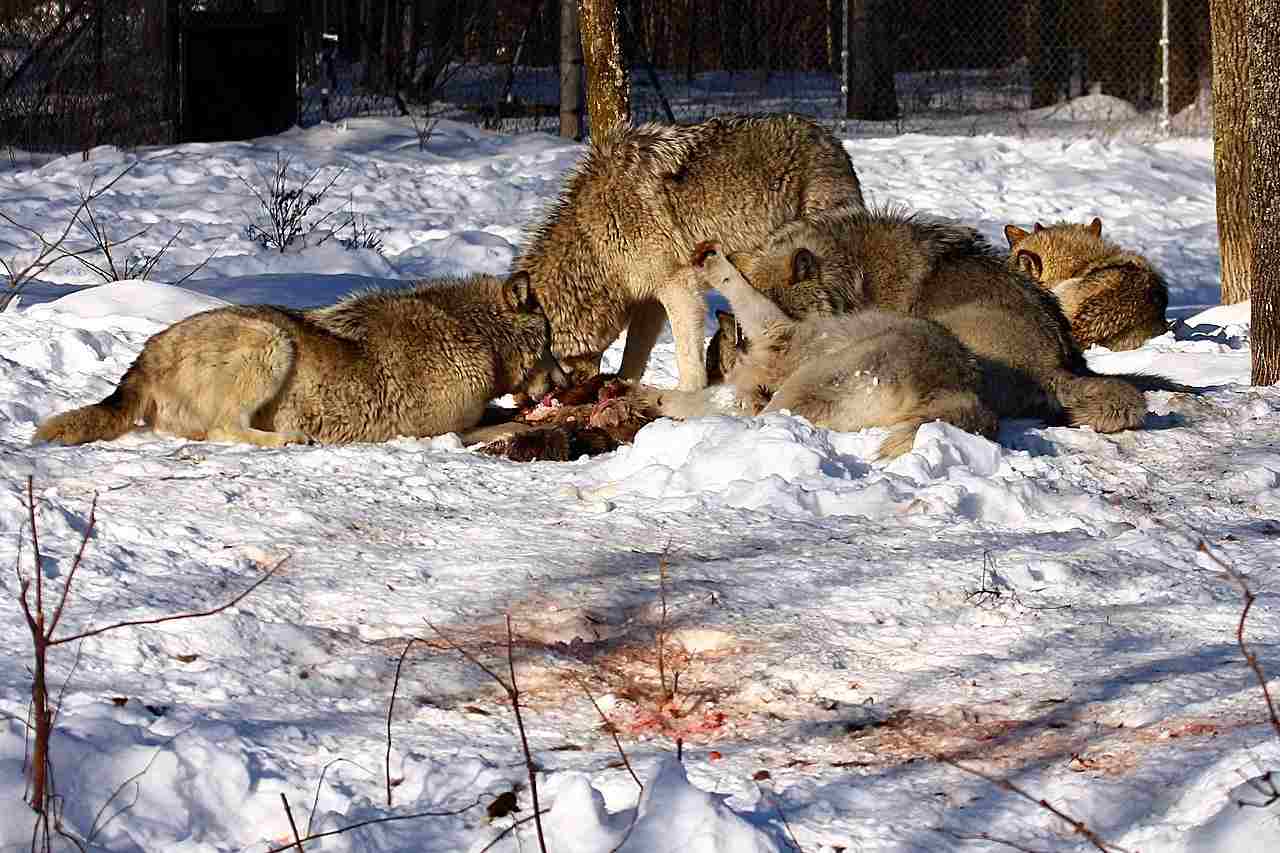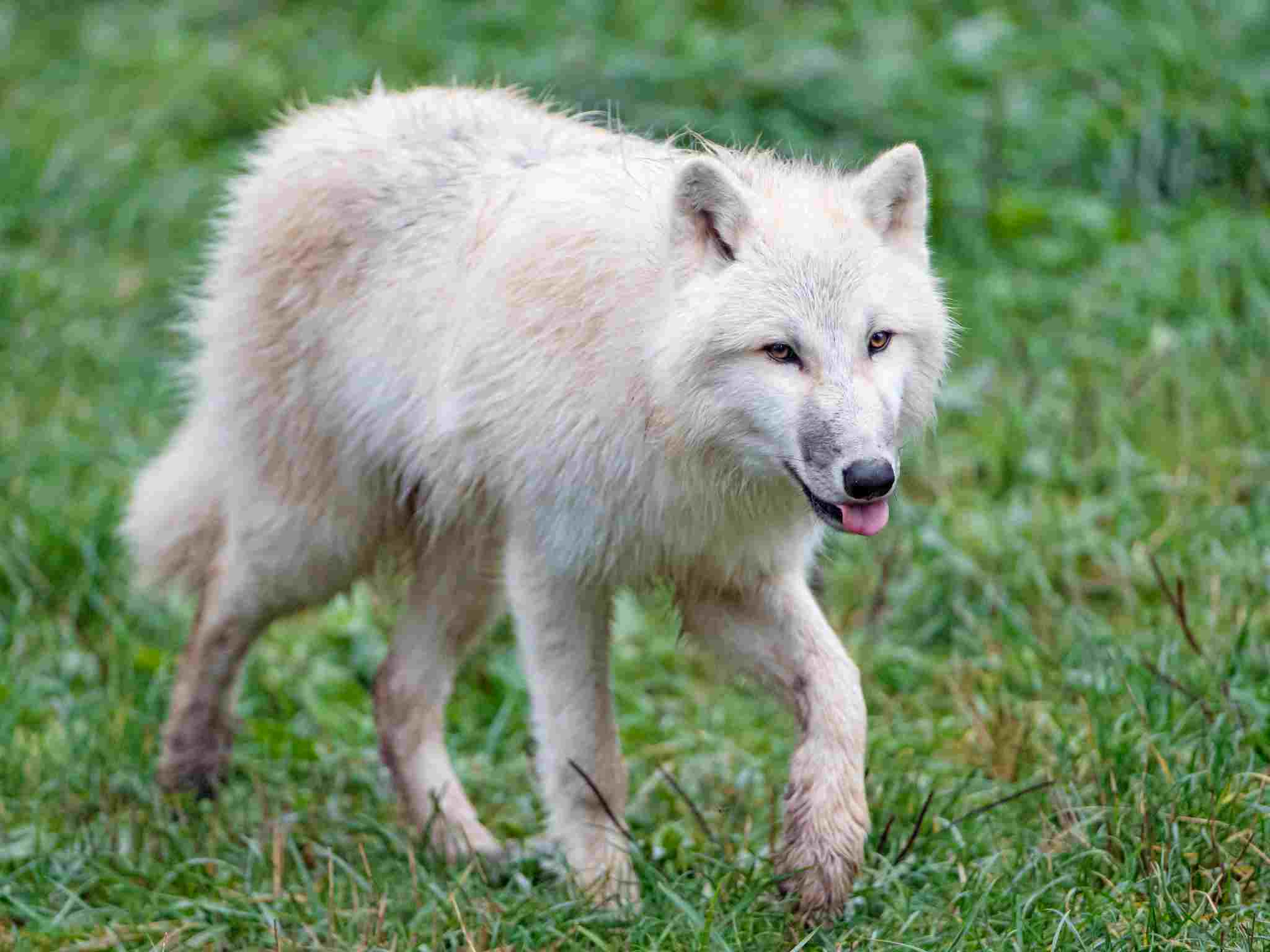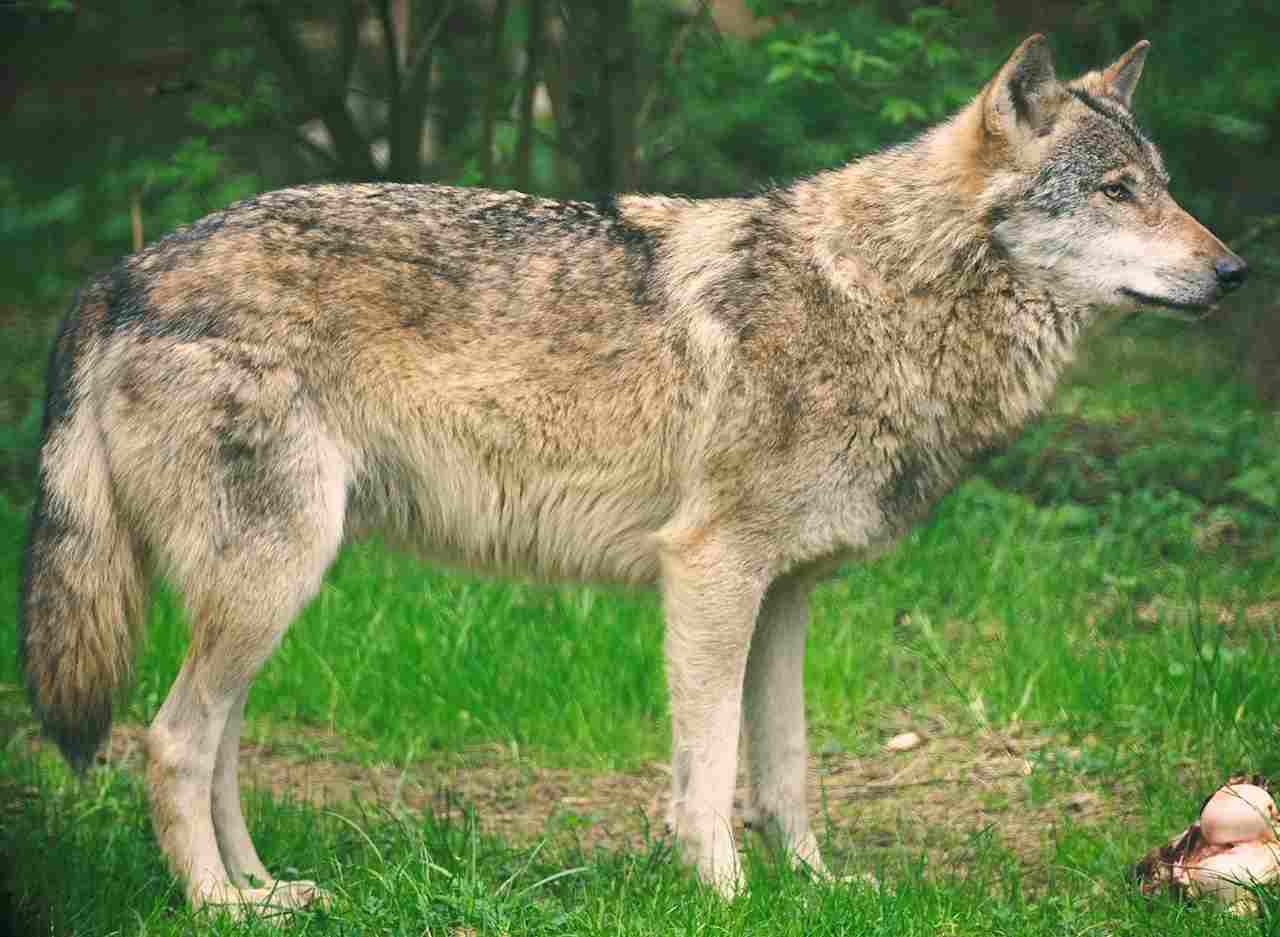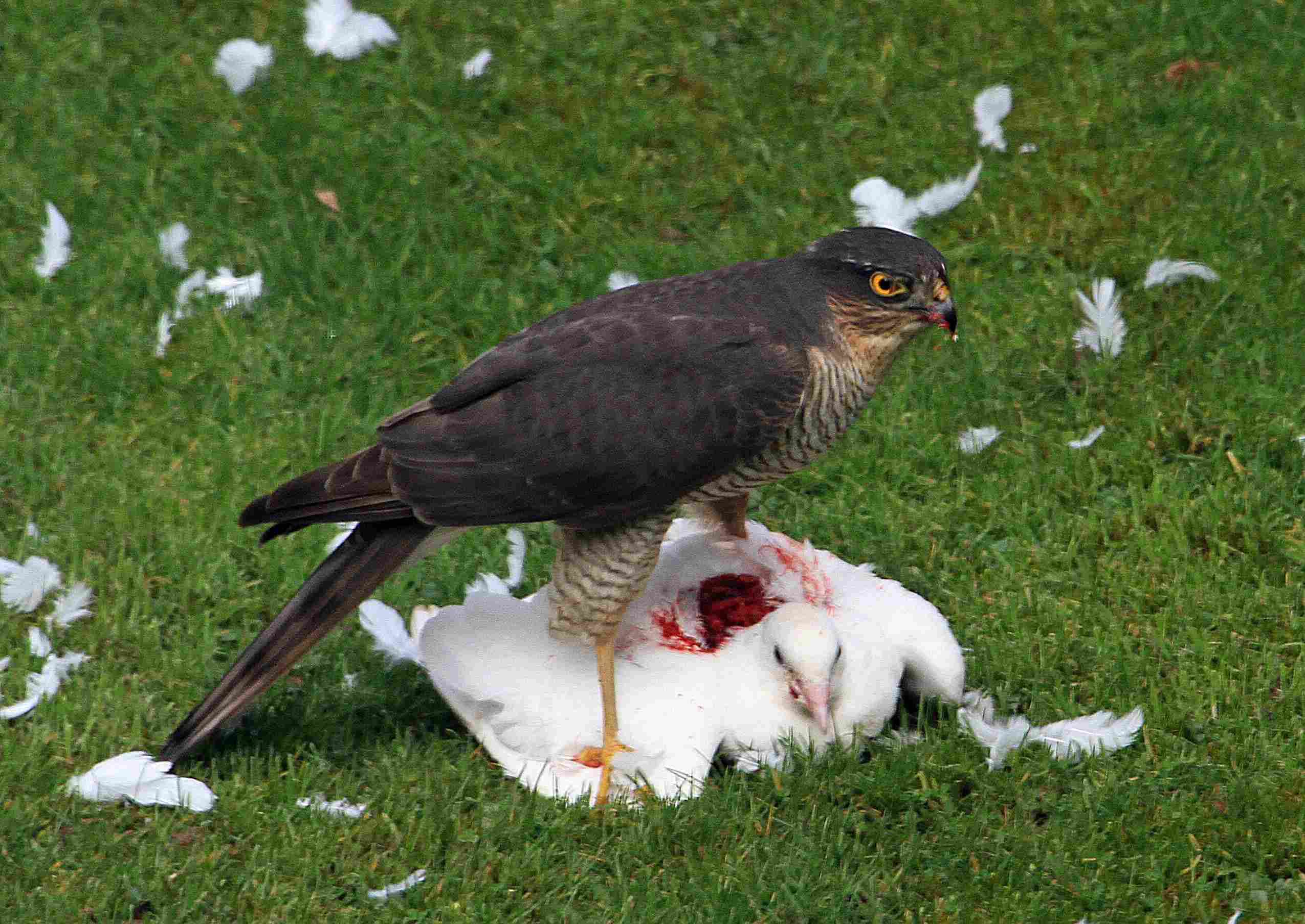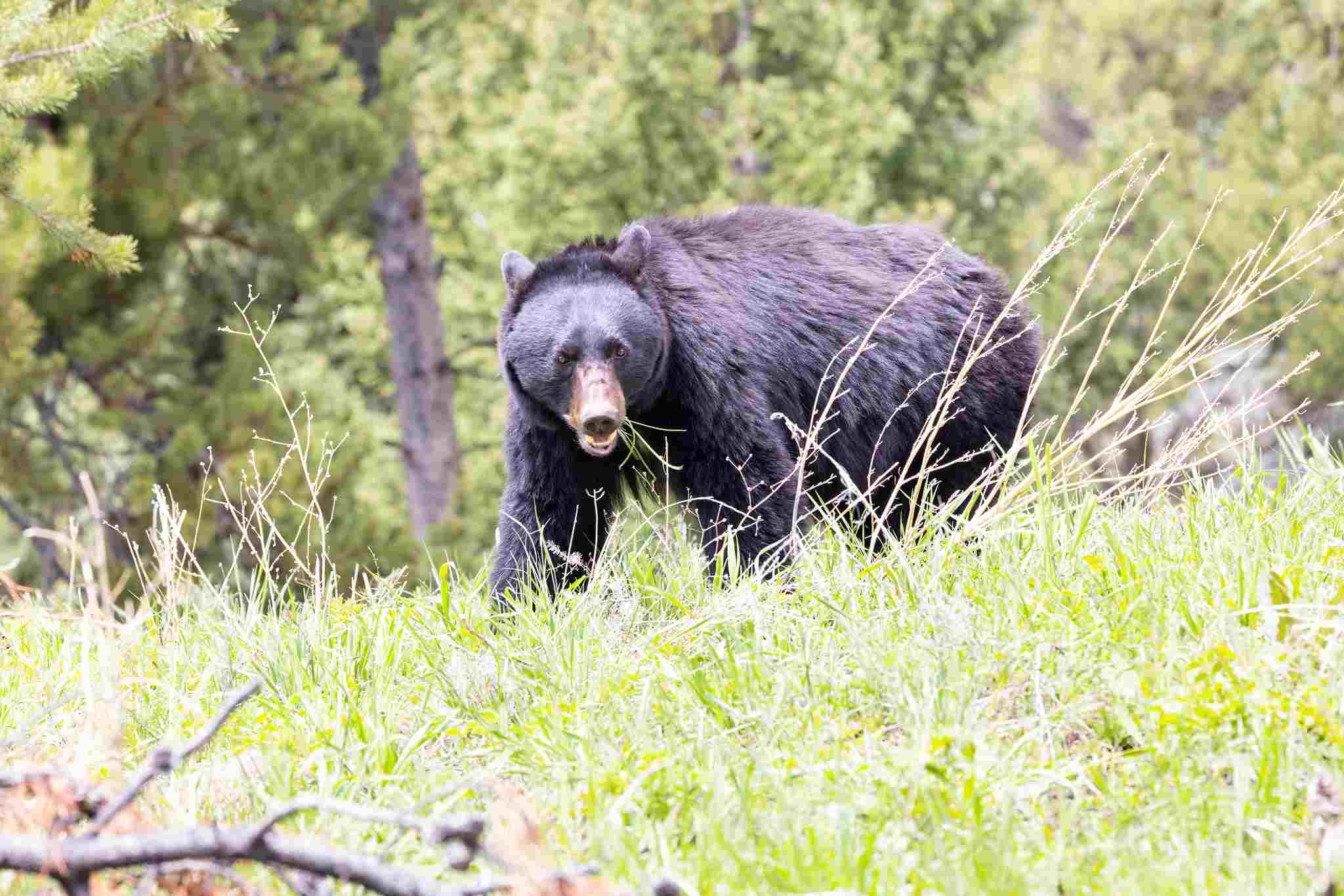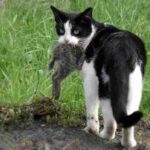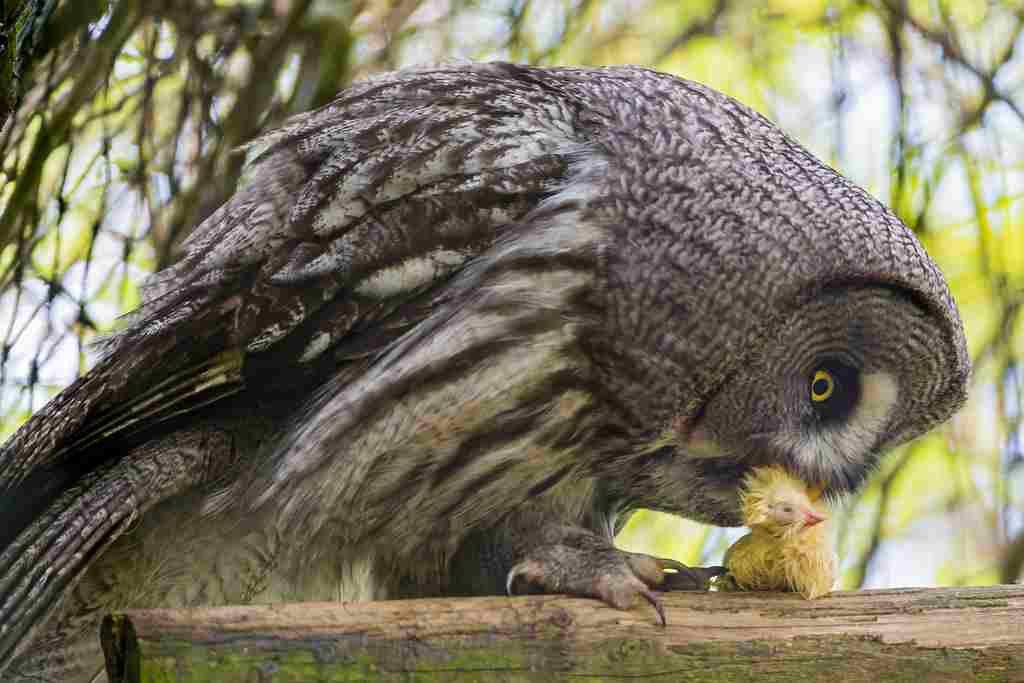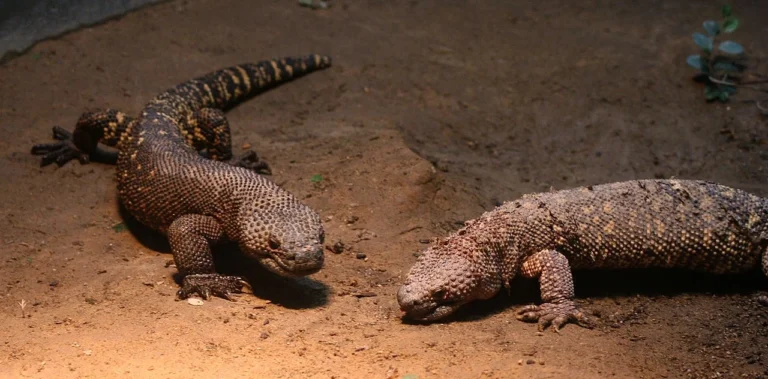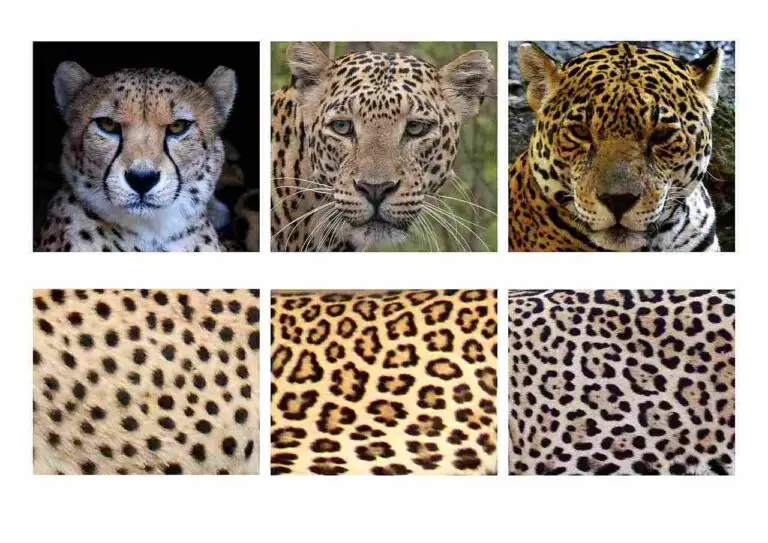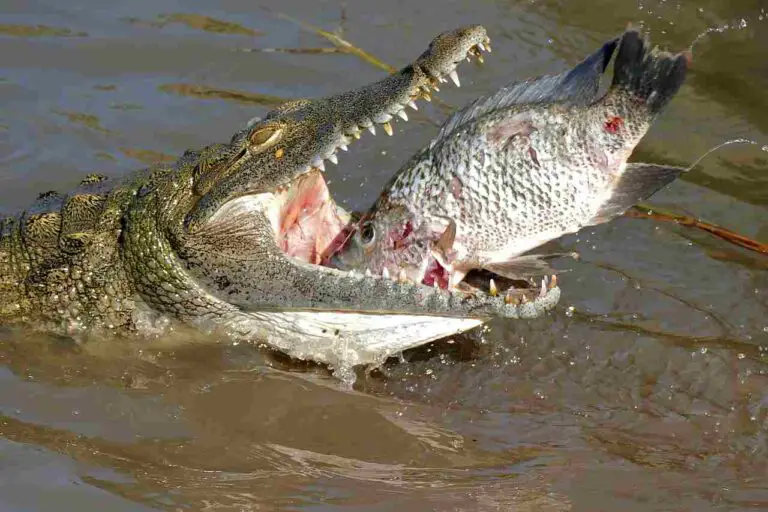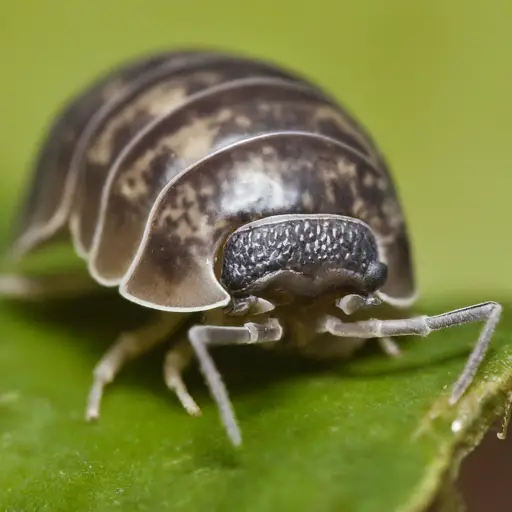9+ Carnivores in Temperate Grasslands and Their Characteristics
Examples of carnivores in temperate grasslands include grey wolves, brown bears, owls, badgers, and hawks. These carnivores play vital roles in maintaining ecosystem balance by regulating prey populations, controlling rodent populations, and contributing to nutrient cycling. However, they face threats such as habitat loss, fragmentation, and human-wildlife conflict. Conservation efforts aim to protect their habitats, mitigate conflicts, and raise awareness about their importance in sustaining healthy grassland ecosystems.
1. Grey Wolf
The grey wolf, or Canis lupus, is a formidable predator that plays a crucial role in the temperate grassland ecosystem. These highly social animals typically live in packs, exhibiting complex social structures and communication systems. In the vast expanses of temperate grasslands, grey wolves are efficient hunters, preying on a variety of herbivores such as deer, elk, and bison. Their hunting prowess is facilitated by their keen senses of smell, sight, and hearing, allowing them to detect prey from great distances.
Within the grassland habitat, grey wolves face both opportunities and challenges. The open terrain provides ample space for hunting and territorial expansion, but it also exposes them to threats such as habitat loss and human encroachment. Additionally, competition with other carnivores, both within their own species and with other predators like mountain lions, can influence their behavior and hunting patterns.
Grey wolves are apex predators, exerting top-down control on prey populations. Their presence helps regulate herbivore populations, preventing overgrazing and promoting ecosystem balance. Furthermore, their scavenging behavior contributes to nutrient cycling within the grassland ecosystem, as they consume carrion and redistribute nutrients through their feces.
Despite their vital ecological role, grey wolves have faced significant challenges due to human activities, including habitat destruction, hunting, and persecution. Conservation efforts, such as habitat restoration and reintroduction programs, are essential for ensuring the continued presence of these iconic carnivores in temperate grasslands. By protecting grey wolf populations, we not only safeguard biodiversity but also maintain the integrity and resilience of the grassland ecosystem as a whole.
2. Brown Bear
The brown bear, also known as Ursus arctos, is a powerful carnivore that roams the temperate grasslands with an imposing presence. These solitary creatures are omnivorous, feeding on a diverse diet that includes grasses, berries, small mammals, and occasionally larger prey such as deer or elk. Despite their omnivorous nature, brown bears are formidable predators, capable of taking down prey much larger than themselves when the opportunity arises.
In the temperate grasslands, brown bears play a vital role as both predators and scavengers. Their feeding habits influence the distribution of prey populations and contribute to the overall dynamics of the ecosystem. Brown bears also serve as seed dispersers, as they consume fruits and berries and spread the seeds through their scat, facilitating the regeneration of plant species in the grassland habitat.
However, like many large carnivores, brown bears face numerous threats in the modern world. Habitat loss, fragmentation, and human-wildlife conflict pose significant challenges to their survival. Additionally, illegal poaching and hunting for trophies or traditional medicine continue to take a toll on brown bear populations.
Conservation efforts aimed at protecting brown bears in the temperate grasslands focus on habitat preservation, conflict mitigation strategies, and raising awareness about the importance of these apex predators in maintaining ecosystem health. By safeguarding brown bear populations, we not only preserve biodiversity but also ensure the ecological integrity of the grassland habitat for future generations.
3. Owl
Owls are fascinating nocturnal predators that inhabit the temperate grasslands, playing a crucial role in controlling rodent populations. These birds of prey are well-adapted to their grassland environment, with keen eyesight, acute hearing, and silent flight enabling them to hunt effectively under the cover of darkness.
One of the most iconic owl species found in temperate grasslands is the barn owl (Tyto alba), known for its heart-shaped face and pale plumage. Barn owls primarily feed on small mammals such as mice, voles, and shrews, making them valuable allies for farmers seeking natural pest control solutions.
In addition to barn owls, other owl species such as the great horned owl and the short-eared owl also inhabit temperate grasslands, each contributing to the regulation of rodent populations through predation. These birds of prey are highly efficient hunters, with specialized adaptations such as talons and sharp beaks for capturing and consuming their prey.
While owls provide invaluable services in controlling rodent populations and maintaining ecosystem balance, they too face threats from habitat loss, pesticide use, and collisions with vehicles and structures. Conservation efforts focused on preserving grassland habitats and implementing sustainable land management practices are essential for ensuring the continued presence of owls and their vital role in temperate grassland ecosystems.
4. Badger
Badgers are burrowing carnivores that inhabit temperate grasslands, where they play a unique role as both predators and ecosystem engineers. These nocturnal mammals belong to the family Mustelidae and are known for their distinctive black and white facial markings.
In the grassland habitat, badgers primarily feed on small mammals such as rodents, rabbits, and ground squirrels. Their powerful claws and strong jaws enable them to excavate burrows and access underground prey, making them effective predators in the subterranean environment. Badgers also consume insects, fruits, and plant matter, exhibiting omnivorous feeding habits.
Beyond their role as predators, badgers contribute to ecosystem health through their burrowing activities. Their extensive underground tunnels create habitat for a variety of other species, including reptiles, amphibians, and invertebrates. These burrows also aerate the soil and facilitate water infiltration, promoting plant growth and nutrient cycling in the grassland ecosystem.
Despite their ecological importance, badgers face threats from habitat destruction, fragmentation, and persecution. Human activities such as urbanization, agriculture, and road development can disrupt badger populations and fragment their habitat, leading to declines in their numbers.
Conservation efforts aimed at protecting badgers in temperate grasslands focus on habitat preservation, mitigating human-wildlife conflict, and raising awareness about the importance of these burrowing carnivores in maintaining ecosystem diversity and resilience. By safeguarding badger populations, we not only preserve biodiversity but also ensure the ecological integrity of the grassland habitat for future generations.
5. Hawk
Hawks are majestic birds of prey that inhabit temperate grasslands, where they play a crucial role as apex predators in the avian hierarchy. These raptors are known for their keen eyesight, powerful talons, and swift aerial maneuvers, which enable them to hunt a variety of prey species with precision and efficiency.
In the grassland habitat, hawks primarily feed on small mammals such as mice, voles, and rabbits, as well as birds, reptiles, and insects. Their hunting strategies vary depending on the species and available prey, with some hawks employing soaring and diving techniques to capture prey on the ground, while others hunt from perches or use stealth to ambush their victims.
One of the most iconic hawk species found in temperate grasslands is the red-tailed hawk (Buteo jamaicensis), recognizable for its rusty-red tail feathers and broad wingspan. Red-tailed hawks are opportunistic hunters, preying on a wide range of small mammals and birds, making them important regulators of prey populations in the grassland ecosystem.
Despite their importance as top predators, hawks face threats from habitat loss, pesticide use, and collisions with vehicles and structures. Conservation efforts aimed at protecting grassland habitats and implementing sustainable land management practices are essential for ensuring the continued presence of hawks and their vital role in maintaining ecosystem balance.
6. Black-Footed Ferret
The black-footed ferret (Mustela nigripes) is a rare and endangered carnivore that inhabits temperate grasslands, where it plays a crucial role as a predator of small mammals such as prairie dogs. These elusive mustelids are known for their slender bodies, distinctive facial markings, and black feet, from which they derive their name.
In the grassland habitat, black-footed ferrets are highly specialized hunters, relying primarily on prairie dogs for food. They use their keen sense of smell and agility to locate and capture their prey within the extensive burrow systems created by prairie dog colonies. By preying on prairie dogs, black-footed ferrets help regulate their populations and prevent overgrazing of grasslands.
Despite their importance as predators, black-footed ferrets face numerous threats to their survival, including habitat loss, fragmentation, disease, and predation by other animals such as coyotes and birds of prey. Human activities such as agriculture, urbanization, and the use of pesticides further exacerbate these threats, pushing black-footed ferrets to the brink of extinction.
Conservation efforts aimed at protecting black-footed ferrets in temperate grasslands focus on habitat restoration, captive breeding and reintroduction programs, disease management, and predator control. By safeguarding black-footed ferret populations and their grassland habitat, we not only preserve biodiversity but also ensure the ecological integrity of the ecosystem for future generations.
7. Mountain Lion
The mountain lion, also known as cougar or puma (Puma concolor), is a formidable apex predator that roams the temperate grasslands with stealth and power. These solitary cats are highly adaptable and can thrive in a variety of habitats, including grasslands, forests, and mountains, where they play a crucial role in regulating prey populations and maintaining ecosystem balance.
In the grassland habitat, mountain lions primarily feed on ungulates such as deer, elk, and bison, as well as smaller mammals such as rabbits and rodents. Their hunting prowess is facilitated by their stealthy stalking behavior, powerful jaws, and sharp claws, which enable them to ambush and subdue prey with precision.
Despite their role as top predators, mountain lions face numerous threats in the modern world, including habitat loss, fragmentation, human-wildlife conflict, and poaching. Encounters with humans and livestock can lead to conflicts that result in the persecution of mountain lions and the loss of their natural habitat.
Conservation efforts aimed at protecting mountain lions in temperate grasslands focus on habitat preservation, conflict mitigation strategies, and raising awareness about the importance of these apex predators in maintaining ecosystem health. By safeguarding mountain lion populations and their grassland habitat, we not only preserve biodiversity but also ensure the ecological integrity of the ecosystem for future generations.
8. Plains Garter Snake
The plains garter snake (Thamnophis radix) is a common reptile found in the temperate grasslands, where it plays an important role as a predator of small vertebrates and invertebrates. These non-venomous snakes are characterized by their slender bodies, distinct longitudinal stripes, and keeled scales, which enable them to move efficiently through the grassland habitat.
In the grasslands, plains garter snakes primarily feed on a diet of amphibians, small rodents, birds, fish, and insects. Their hunting strategies include ambush predation, where they lie in wait for prey to pass by, as well as active foraging, where they actively search for food among grasses and vegetation.
Plains garter snakes are themselves preyed upon by a variety of predators, including birds of prey, larger snakes, mammals, and even other snakes. To defend themselves, these snakes may release a foul-smelling musk or use their quick reflexes to escape into nearby vegetation or burrows.
Conservation efforts aimed at protecting plains garter snakes in temperate grasslands focus on habitat preservation, sustainable land management practices, and public education about the importance of snakes in maintaining ecosystem balance. By safeguarding plains garter snake populations and their grassland habitat, we not only preserve biodiversity but also ensure the ecological integrity of the ecosystem for future generations.
9. Prairie Rattlesnake
The prairie rattlesnake (Crotalus viridis) is a venomous snake that inhabits the temperate grasslands of North America, where it plays a crucial role as a predator and helps regulate prey populations. These snakes are characterized by their distinctive rattles, which they use as a warning signal to deter potential threats.
In the grassland habitat, prairie rattlesnakes primarily feed on small mammals such as mice, voles, rabbits, and ground squirrels, as well as birds, lizards, and insects. Their venomous bite immobilizes prey, allowing the snake to consume it at its leisure.
Despite their role as predators, prairie rattlesnakes face numerous threats in the modern world, including habitat loss, fragmentation, persecution, and road mortality. Encounters with humans and pets can also lead to conflicts that result in the unnecessary killing of these snakes.
Conservation efforts aimed at protecting prairie rattlesnakes in temperate grasslands focus on habitat preservation, public education about snake ecology and behavior, and implementing strategies to minimize human-snake conflicts. By safeguarding prairie rattlesnake populations and their grassland habitat, we not only preserve biodiversity but also ensure the ecological integrity of the ecosystem for future generations.
10. Frog
Frogs are amphibians that play an important role in temperate grassland ecosystems as both predators and prey. These small, semi-aquatic animals are known for their distinctive calls, which serve as mating calls during the breeding season.
In the grassland habitat, frogs feed on a variety of invertebrates such as insects, spiders, and worms, as well as small vertebrates such as tadpoles and smaller frogs. Their diet and feeding habits contribute to the regulation of insect populations and help maintain ecosystem balance.
Frogs themselves are preyed upon by a variety of predators, including birds, snakes, mammals, and other amphibians. To avoid predation, frogs may use camouflage, toxins, or rapid movements to escape from predators.
Conservation efforts aimed at protecting frogs in temperate grasslands focus on habitat preservation, water quality management, and disease prevention. By safeguarding frog populations and their grassland habitat, we not only preserve biodiversity but also ensure the ecological integrity of the ecosystem for future generations.
*Summary
-
Grey Wolf
-
Apex predator, crucial for ecosystem balance
-
Highly social, lives in packs
-
Hunts herbivores like deer, elk, and bison
-
Faces threats like habitat loss and human encroachment
-
Conservation efforts focus on habitat restoration and reintroduction programs
-
-
Brown Bear
-
Powerful omnivore, preys on various species
-
Important for seed dispersal and ecosystem health
-
Faces threats like habitat loss and poaching
-
Conservation efforts target habitat preservation and conflict mitigation
-
-
Owl
-
Nocturnal predator, controls rodent populations
-
Various species inhabit grasslands
-
Faces threats like habitat loss and pesticide use
-
Conservation focuses on habitat preservation and sustainable land management
-
-
Badger
-
Burrowing carnivore, controls small mammal populations
-
Plays a role as an ecosystem engineer
-
Faces threats like habitat loss and fragmentation
-
Conservation efforts include habitat restoration and awareness campaigns
-
-
Hawk
-
Majestic birds of prey, hunt small mammals and birds
-
Red-tailed hawk is iconic in grasslands
-
Faces threats like habitat loss and collisions
-
Conservation efforts target habitat preservation and awareness
-
-
Black-Footed Ferret
-
Endangered predator, preys on prairie dogs
-
Plays a role in regulating prairie dog populations
-
Faces threats like habitat loss and disease
-
Conservation efforts focus on captive breeding and reintroduction
-
-
Mountain Lion
-
Apex predator, regulates ungulate populations
-
Faces threats like habitat loss and human-wildlife conflict
-
Conservation focuses on habitat preservation and conflict mitigation
-
-
Plains Garter Snake
-
Predates on small vertebrates and invertebrates
-
Plays a role in maintaining ecosystem balance
-
Faces threats like habitat loss and persecution
-
Conservation efforts target habitat preservation and public education
-
-
Prairie Rattlesnake
-
Venomous predator, controls small mammal populations
-
Faces threats like habitat loss and persecution
-
Conservation focuses on habitat preservation and minimizing human-snake conflicts
-
-
Frog
-
Preys on invertebrates, contributes to insect control
-
Faces threats like habitat loss and water pollution
-
Conservation efforts target habitat preservation and water quality management
-
| Carnivores | Summary |
| Grey Wolf |
Apex predator, crucial for ecosystem balance. Highly social, hunts herbivores like deer, elk, and bison.
|
| Brown Bear |
Powerful omnivore, preys on various species, important for seed dispersal and ecosystem health.
|
| Owl |
Nocturnal predator, controls rodent populations, various species inhabit grasslands.
|
| Badger |
Burrowing carnivore, controls small mammal populations, plays a role as an ecosystem engineer.
|
| Hawk |
Majestic birds of prey, hunt small mammals and birds, red-tailed hawk is iconic in grasslands.
|
| Black-Footed Ferret |
Endangered predator, preys on prairie dogs, plays a role in regulating prairie dog populations.
|
| Mountain Lion |
Apex predator, regulates ungulate populations, faces threats like habitat loss and human-wildlife conflict.
|
| Plains Garter Snake |
Predates on small vertebrates and invertebrates, plays a role in maintaining ecosystem balance.
|
| Prairie Rattlesnake |
Venomous predator, controls small mammal populations, faces threats like habitat loss and persecution.
|
| Frog |
Preys on invertebrates, contributes to insect control, faces threats like habitat loss and water pollution.
|
FAQs about Carnivores in Temperate Grasslands
-
Why are carnivores important in temperate grasslands?
-
Carnivores play a crucial role in maintaining ecosystem balance by controlling prey populations and preventing overgrazing. They also contribute to nutrient cycling and seed dispersal, helping to sustain the health and diversity of the grassland habitat.
-
-
What are the main threats to carnivores in temperate grasslands?
-
Carnivores face various threats, including habitat loss and fragmentation due to human activities such as agriculture, urbanization, and infrastructure development. Additionally, they are often persecuted by humans, either through direct hunting or as a result of conflicts with livestock or pets.
-
-
How do conservation efforts help protect carnivores in temperate grasslands?
-
Conservation efforts focus on habitat preservation, restoration, and management to ensure suitable habitat for carnivores. Additionally, measures such as captive breeding, reintroduction programs, and public education campaigns raise awareness about the importance of these predators and promote coexistence between humans and wildlife.
-
-
What can individuals do to support carnivore conservation in temperate grasslands?
-
Individuals can contribute to carnivore conservation by supporting organizations and initiatives dedicated to habitat preservation and wildlife protection. They can also advocate for sustainable land management practices, reduce their ecological footprint, and participate in citizen science projects to monitor carnivore populations.
-
-
Are there any benefits to having carnivores in temperate grasslands?
-
Yes, carnivores provide various ecosystem services, including regulating prey populations, controlling pest species, and promoting ecosystem resilience. Their presence contributes to the overall health and functioning of the grassland habitat, benefiting both wildlife and human communities.
-

